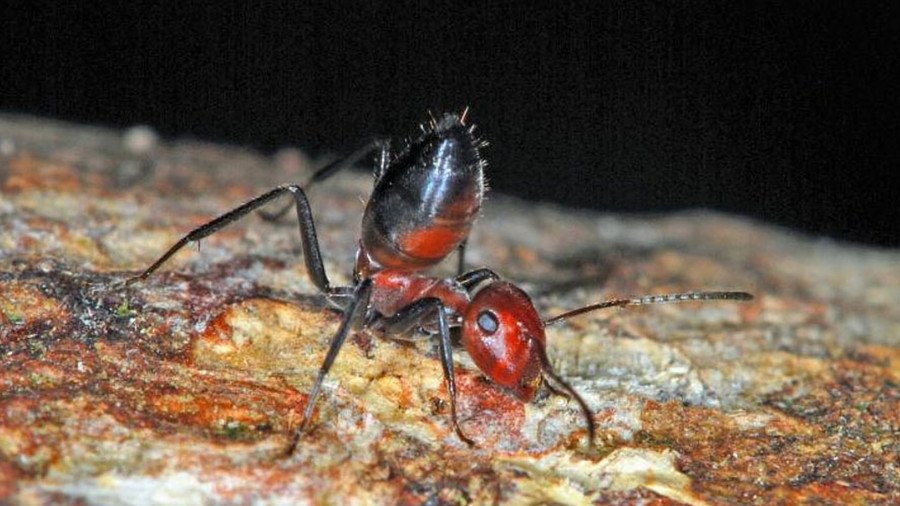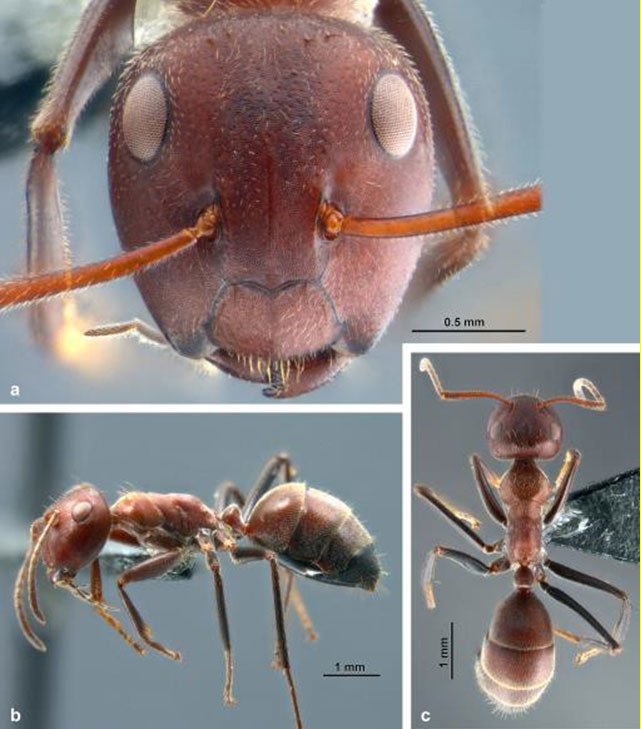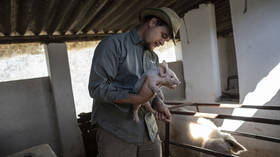‘Exploding’ ants discovered: Kamikaze insects kill predators with toxic… well, selves

A new species of kamikaze-style ants has been found in Borneo, Southeast Asia. The ‘exploding’ critters sacrifice themselves to attack predators and defend their colony.
The ‘colobopsis explodens’ was discovered by a team of international researchers who identified 15 separate species of exploding ants in the tropical rainforest. Details of the study have been published in Zookeys.
The team noticed that this species was “particularly prone to self-sacrifice when threatened by enemy arthropods, as well as intruding researchers.”
#NewSpecies of spectacular #ant blows itself up to protect its colony from enemies!Find more about this entomological phenomenon on @Pensoft's blog here: https://t.co/2EcHn2BoYX#Hymenoptera#biodiversity#entomology#zoologypic.twitter.com/8JIhPu5exV
— ZooKeys (@ZooKeys_Journal) April 19, 2018
While the ant doesn’t literally explode, it makes the ultimate sacrifice by ejecting a toxic liquid capable of killing the threat – but also causing the ant’s heroic demise.
The mechanism is deployed by minor worker ants as a last resort if its defensive stance of raising its posterior doesn’t warn off the enemy. The ant then actively ruptures its body wall to secrete the deadly sticky yellow goo from their enlarged glands.

Alice Laciny, an entomologist with the Natural History Museum in Vienna, and project researcher told National Geographic that the lethal goo smells bizarrely similar to curry.
This suicidal tendency in animals is called autothysis, and is common in superorganisms such as ants, who work as a collective. Bees adopt a similarly self-destructive defense behavior when delivering a sting to a person.
Other castes of this ant species have their own protective traits. Major workers, for example, use their big, plug-shaped heads to guard against intruders.

The discovery of the ‘colobopsis explodens’ is part of a wider project on Borneo’s exploding ants launched in 2014 and funded by the Vienna Science and Technology Fund. Researchers based in Austria, Thailand and Brunei are taking part in the study.
Think your friends would be interested? Share this story!















